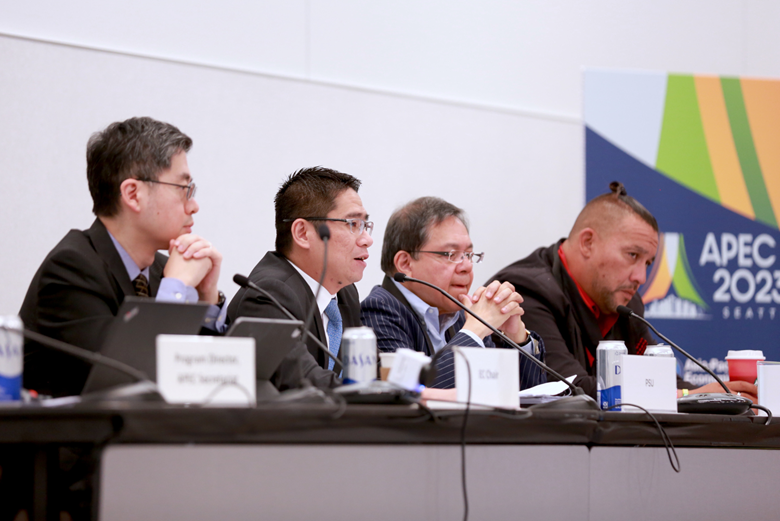
A new report of APEC's structural reform efforts revealed that despite global challenges, APEC has made good progress in certain key focus areas as the region pursues sustainable and inclusive growth as well as economic resiliency.
The Enhanced APEC Agenda for Structural Reform (EAASR) underscores APEC's longstanding commitment to structural reforms. A midterm review was conducted by the APEC Policy Support Unit this year, to provide a snapshot of progress in various areas and to stimulate substantive policy discussions and actions among member economies as they progress toward the final review in 2025.
"Over the years, APEC's commitment to structural reform has remained unwavering, addressing various issues and responding to the pressing challenges brought about by the COVID-19 pandemic, and now, more urgently, climate change," said Carlos Kuriyama, Director of the APEC Policy Support Unit.
EAASR is the latest iteration of APEC's structural reform agenda since the adoption of such work by APEC Leaders almost two decades ago in 2004.
This current agenda was endorsed by APEC Structural Reform Ministers in 2021 and focuses on four key pillars to create an enabling environment conducive to open, transparent, and competitive markets; boost business recovery and resilience against future shocks; ensure equal access to opportunities for all groups in society for more inclusive, sustainable growth, and greater well-being; and harness innovation, new technology, and skills development to boost productivity and digitalization.
"EAASR encourages economies to undertake robust, comprehensive and ambitious structural reforms. This is to ensure that the Asia-Pacific remains the world's most dynamic and interconnected regional economy," said Dr James Ding, Chair of the APEC Economic Committee, which oversees the forum's structural reform efforts.
"This agenda also sets directions for growth-focused structural reform that's designed to be inclusive, sustainable and innovation-friendly, in line with the APEC Putrajaya Vision 2040 and the Aotearoa Plan of Action" added Dr Ding.
Analysis of the midterm review suggests that APEC member economies should prioritize several key areas to further their structural reform efforts. These include improving the business regulatory environment with a focus on the services sector. Although the policy environment surrounding services trade has become less restrictive, it is still more restrictive than pre-pandemic level.
"Members should also strive to create a thriving and conducive environment for innovation," said Andre Wirjo, an analyst with the Policy Support Unit. "At 2.7 percent of GDP, APEC research and development (R&D) expenditure is higher than ASEAN's but lower than that of OECD as a peer region."
Moreover, the review highlighted the need for member economies to enhance human capital development in the region.
"Education is a game changer and is strongly linked to earnings. Yet in APEC, only less than two-thirds of the school-age population are enrolled in tertiary level education, suggesting that more could be done on this front," added Wirjo. "It is also important that access is accompanied by quality of education and other avenues for upgrading such as vocational training."
Other key areas that are highlighted in the review includes the need to intensify efforts to enhance inclusivity, strengthen women's economic empowerment, bridge the digital divide and promote the transition to green economy.
Environmental challenges such as climate change are another global risk to which economies must respond to. The APEC Policy Support Unit estimates that potential losses caused by climate change could reach as high as 18.3 percent of GDP by 2050, far higher than the pandemic-induced 1.8 percent GDP loss in 2020.
Analysis shows that members should continue the transition to green economy, including improving its performance relative to the OECD, in particular when it comes to minimizing the damage caused by carbon dioxide emissions, as well as increasing the share of renewable energy as a primary energy source.
To read the full "Enhanced APEC Agenda for Structural Reform (EAASR) Mid-Term Review Report" including the review of progress made by individual APEC economies, please visit this page.






